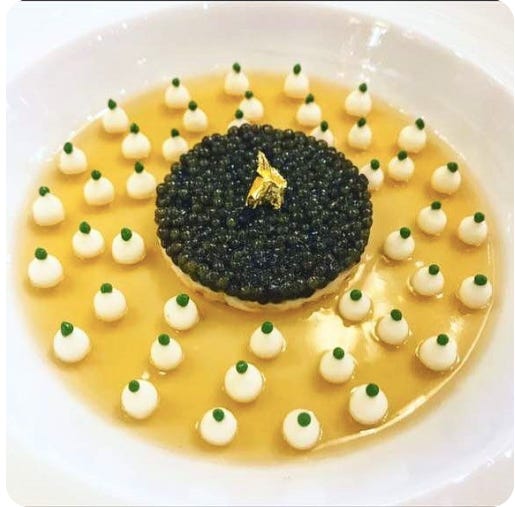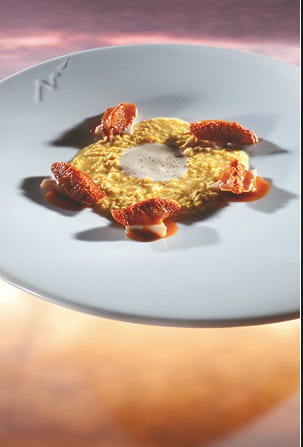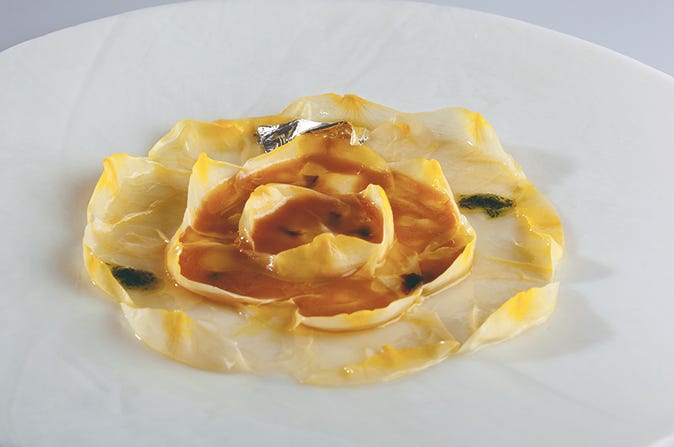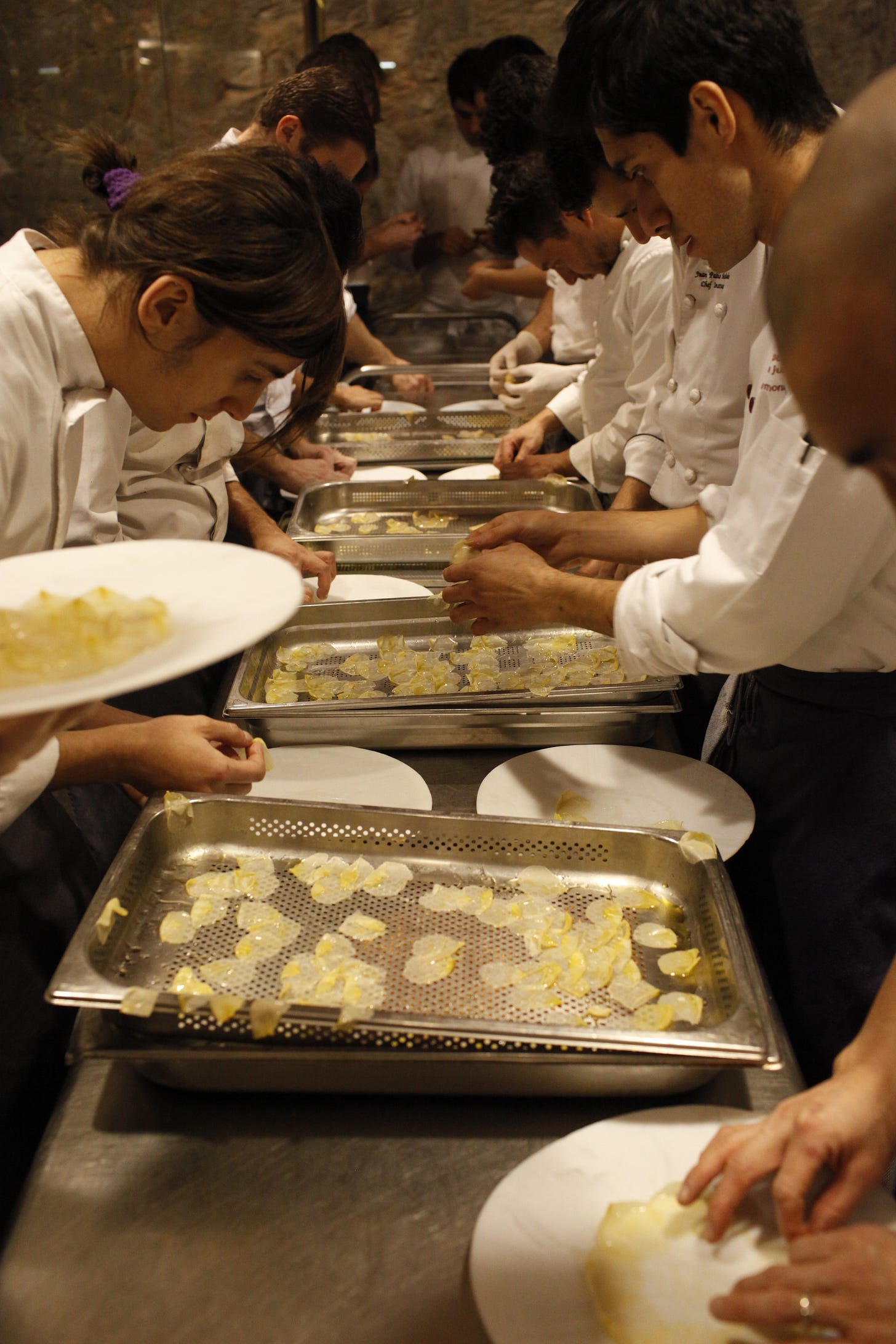Hi there,
This week, the Tour de France was in Copenhagen, and between that and the Roskilde Festival, the media’s attention–to say nothing of everyone’s Instagram feed–has shifted away from the discussion of restaurant workplaces. Last night’s horrid shooting at a mall will probably mean it stays that way, at least for the next few days. But tonight, the Michelin stars for the Nordic countries are announced, so there will probably be a blip of public hand-wringing over whether awards like Michelin have a responsibility to consider workplace conditions in their assessments or not. I’ll let you know if they reach a conclusion. ; )
Before I turn back to my stagiaire dissertation (you can read previous installments here and here), one quick note for those of you who live in Copenhagen: we’re holding a bake sale TODAY, July 4 (no, the date is not coincidental and yes, it is ironic), with the good people at Villette and Pompette and a bunch of this city’s amazing, and amazingly generous, bakers and chefs, to raise money for abortion rights. It will take place from 16-19.00 at Villette (Fælledvej 12, in Nørrebro) and all proceeds go directly to Planned Parenthood and the Brigid Alliance. The equally amazing Tait Sye has agreed to match the amount we raise, so please come and eat a lot of cake.
Thanks for reading,
Lisa
So where were we? Oh yes: Joël Robuchon.
He may have been one of the greatest chefs of all time; he may have delighted legions of diners with his cooking and discovered the platonically ideal proportion of butter to potato. But by the time Joël Robuchon died in 2018--during that same sad summer that also took Anthony Bourdain and Jonathan Gold—he had bequeathed another enduring legacy: a definition of fine dining that holds perfection as its only acceptable goal and equates that perfection with a kind of complexity and meticulousness that necessarily requires extreme amounts of labor and discipline.
When Eric Ripert, the now-renowned chef of New York’s Le Bernardin, went to work in the kitchen at Jamin in the mid 1980s, Robuchon was already so famous that cultured Parisians referred to him simply by his initials. Diners adored him for the deliciousness of his recipes, but what made Robuchon famous among chefs was the gobsmacking complexity of his cooking. The cold lobster salad that Ripert had to prepare was representative: the recipe was a full twenty steps long. It began with the crafting of a crystalline bouillon whose many ingredients were added individually at specifically-timed intervals, required the scooping of literally hundreds of perfectly round, pea-sized spheres of apple, melon, and avocado; and culminated in the plating of precision-sliced lobster meat.
It was only then that the worst began, at least for the poor cook charged with preparing the dish: a blend of sauces had to be squeezed out of a pastry bag in concentric circles of precisely spaced, evenly-sized dots. There were, as Ripert recalls in his memoir 32 Yolks, 90 of them.
Per plate.
And every single one of them, as Robuchon once reprimanded the young cook during one of the terrifying tantrums for which he was also famous, had to be “perfectly round. Perfect, perfect, perfect.”
Robuchon continues to dominate culinary memory as some kind of controlled mad genius—exquisite in his vision; insane in his demands. But wittingly or not, he also indelibly shaped the ethos of fine dining. For one, he was perhaps the first to conceive of what he was doing as vision; if the idea of the chef as a genius whose vision requires sacrifice not only from himself but from all who work for him didn’t originate with Robuchon, it at least owes a tremendous debt to him.
Perhaps even more impactful was the specific nature of that vision. By taking an impossible ideal (perfection) and turning it into an aesthetic, Robuchon changed the very understanding of excellence. It wasn’t enough for a dish to be delicious, or even delicious and beautiful: it also required a degree of precision that depended on, and even advertised, extreme effort. In this vision, the luxury of fine dining lay not only in the lobster and caviar and other expensive ingredients on the plate but in the labor that it visibly took to get them there.
To some extent, labor is what all restaurants serve: the entire point of eating out is so you don’t have to do the work yourself. And of course the food produced by fine- dining restaurants usually displays a level of technique and skill not readily available to the home cook. But with those dots, Robuchon was telling the diner something else. He was saying: I am willing to expend extreme amounts of my team’s labor in pursuit of my own vision.
This is not to say that Robuchon is alone in his responsibility for this transformation; food media and the broader dining public also played an important role, because, let’s face it, if anyone at that point had said, ‘ugh, gross, I don’t want to eat a dish that gives the poor cooks who make it literal dot-filled nightmares,’ we wouldn’t be having this conversation. But of course, that is not what happened. Robuchon was hailed for his vision, and Jamin got its third Michelin star just three years after it opened, making him, at the time, the youngest chef ever to attain gastronomy’s highest accolade. The lobster salad with its 90 dots remains, along with those mashed potatoes, one of Robuchon’s most famous dishes. And the notion that extreme labor in the service of a chef’s vision would become one of the expectations associated with fine dining, even—or especially—as fine dining began a dramatic transformation.
What does any of this have to do with stagiaires? Ripert, after all, (like the other 24 chefs working in the 40-cover Jamin), had a paid position as chef de partie. But the same year that he was piping dots, Ferran Adria began staging at elBulli. Within twelve months, Adrià had become its head chef. A decade later, he, together with his brother Albert and the other chefs who had joined the team began to experiment. The result of that experimentation would be nothing short of a gastronomic revolution.
Yet although in the ensuing years elBulli would go on to question nearly every aspect of the culinary status quo, it would retain this key Robuchonian notion. Ferran Adrià valued creativity over perfection per se, and most of his dishes lacked the kind of geometric symmetry that made Robuchon’s so visually stunning. He also rejected the notion that cooking at the highest level required ‘luxury’ ingredients; one of his most important contributions was to argue, both verbally and on the plate, that a tomato or a lentil had the same culinary value as lobster or foie gras. But when it came to harnessing vast amounts of labor in the service of his vision, he not only accepted Robuchon’s equation, but advanced it.
At the time when Adrià and his team began to experiment with cuisine’s limits, the restaurant had just a handful of stagiaires, but in the following decade, their numbers would steadily increase, so that by the first decade of the 21st century, the kitchen had over 30 at one time. They needed them because ideas, of course, were not the only thing elBulli was producing; it might have been the most creative restaurant in the world, but it was still a restaurant, and it had to feed people. And feeding people the kinds of dishes that elBull was creating required a lot of hands.
Consider, for example, the corn ‘risotto’ that was a feature of the 2009 menu. The risotto was made not from rice flavored with corn, or from kernels of corn cooked as if they were rice. What was cooked as if it were rice was the tiny germ within each kernel. Extracting the 25 grams needed for each dish (x 50 covers) required a dozen stagiaires, working in silent concentration, to carefully squeeze germ from kernels for an hour each day–and that was just one step in a recipe that had dozens.
The corn risotto was an impressive dish that tasted delicious. But its impact did not really stem from the creativity behind it (in a previous season, elBulli had already served one ‘risotto’ made from fresh pine nuts and another from zucchini seeds). Nor did it come from its unique flavor (if corn germ tastes different than corn kernels, my palate at least is not refined enough to detect it). What was impressive–even unprecedented–about the dish was that anyone would be crazy enough to create a course around an ingredient so minuscule and fiddly and time-consuming to process.
And that was just one dish on a tasting menu that contained thirty or more. Sesame paste and butter squeezed through a syringe into an ice bath to form the 2000 or so individual ‘lentils’ needed for each service. Rose petals that had to be blanched three times (taking one stagiaire a couple of hours each day) before being laid out, one by one, to ensure they were wrinkle-free (6 stagiaires, 1 hour) and then plated in perfect concentric circles (10 stagiaires, 45 minutes). Delicate milk skins for ‘omelets’ (2 stagiaires, 7 hours).
At the time, elBulli was charging 220 euros for its tasting menu. It had 11 paid chefs, including Ferran, working in its kitchen. As a restaurant, it barely broke even most years, and sometimes failed to do even that. Paying for all the labor involved in the 2009 menu would have probably meant quadrupling the price–something Ferran and his business partner Juli Soler did not want to do because it mattered to them that the restaurant not become a playground only for the superrich. But to be honest, I don’t think they ever considered it because they didn’t have to. Not only was there a long history of using stagiaires, but they had literally thousands of young cooks applying for the opportunity each year. Increasing the number of apprentices that they used only granted that opportunity to more people.
A cycle was born. As elBulli received more acclaim for its innovations, it attracted more young cooks who wanted to stage there. As it used more stagiaires, it could execute more and more complicated innovations for which it received even more acclaim. And because elBulli was so influential, its work structures would be adopted by other ambitious restaurants.
Even as other trappings of luxury were cast aside (first the lobster and foie gras, then the white tablecloths and stiff service), the luxury of labor remained. Although it opted for a much more natural-looking approach than elBulli (or Jamin), an aestheticization of extreme amounts of work undergirded Noma as well; it takes a lot of hands a lot of hours to carpet a tartar in wood sorrel leaves that point in the same direction, or tweeze bits of flower and herbs onto the lip of a clam shell. But of course, Noma is hardly alone in this; anyone who cooks or eats in fine dining restaurants today can come up with multiple examples of dishes built around an aesthetic that advertises—at least to those paying attention—the amount of labor that went into making it. Nowadays, that communication works in other ways as well, such as when the server explains the complicated fermentation process requiring round-the-clock monitoring or the 17 precise steps needed to turn carrot trim into a juice that can be emulsified and then dehydrated so that it can be ground into a powder that will be reconstituted before being dusted onto a corner of the plate.
To be clear: there is nothing wrong with complicated processes or laborious techniques or geometric precision. They are all ways in which fine dining distinguishes itself from food you can get in more casual restaurants or make at home. But there is a difference between a dish—or an entire menu full of dishes— being time-consuming to make and a dish or menu being so time-consuming that the restaurant could not afford to make it without massive amounts of workers who are unpaid, stressed out, or some combination of both.
To also be clear: this situation is born of a lot more than just the actions of a handful of individual chefs, and again, if these individuals had not been rewarded with accolades and fame and sometimes even money for what they were doing, we would not be in this situation. The media, both legacy and social; the rise of the 50 Best List and others rankings that turn restaurants into a zero sum game; the transformation of food into both art and entertainment and consumption into cultural practice—all the usual culprits have played a role.
And finally, it’s important to point out that stages like the ones at elBulli and Noma can be hugely beneficial for the cooks who volunteer for them. That is why they apply for them in droves, even though they know (I have never met a stagiaire who did not understand this from the start) that they will be working long hours and will not be paid. It is precisely why so many—and especially those from more prosperous and/or educated backgrounds—seek them from out. They come to learn specific techniques, and how a top professional kitchen is organized. They come so they can put the connection on their resume (this is why so many restaurants smirk a little at the former stagiaires who casually let drop that they ‘worked’ at elBulli or L’Arpege or Noma or Eleven Madison Park, when in fact they spent a couple of weeks there cleaning lettuce leaves) And they come because they want to learn how the chef with the vision does it. They come because they too want to be chefs with vision.
So, what do we do? If the kind of perfection on the plate that we hail as beautiful and celebrate with awards and stars and magazine features requires an amount and kind of labor that, for most restaurants, cannot be reconciled with fair wages for everyone, a decent work/life balance, and their own economic survival, is there a way to change the system? To maintain the educational aspects of the stage while diminishing the exploitative parts? To keep the excellence and discard the ugly?
Some thoughts on how we might go about answering those questions in the next—and mercifully last—part of this series. But if you’ve got any ideas of your own, please share them in the comments.







Lisa reading your excellent series and the painful details of stagiaires work makes we want to run to the nearest In and Out Burger for something quick and easy and yes of course it’s not “fine dining” but who really gives a shit in the big scheme of things. I don’t feel this is a sustainable model on so many levels.